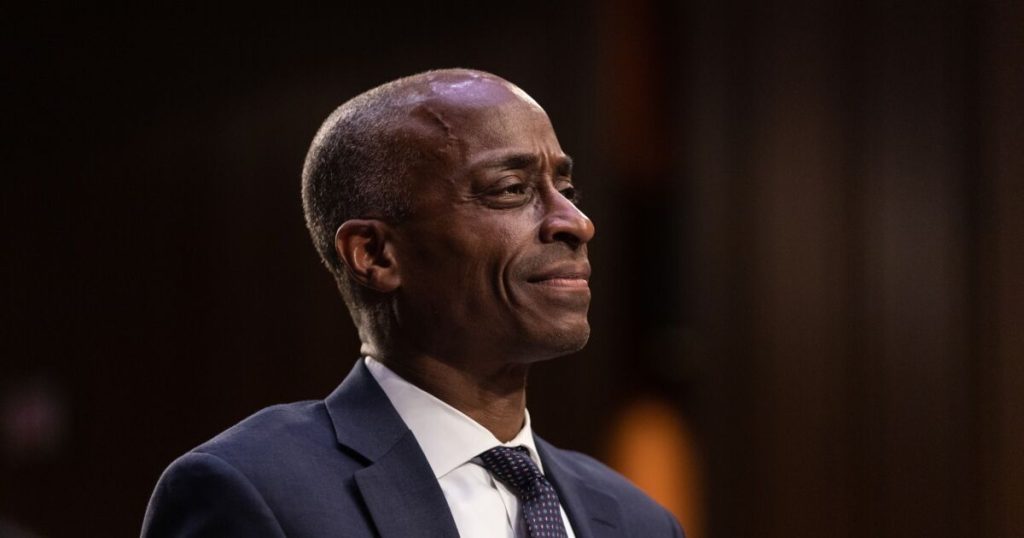Anna Rose Layden/Bloomberg
The Federal Reserve Board’s second-in-command said sophisticated analysis techniques have made monetary policy transmission more efficient in recent years, but cautioned that it is still not perfect.
Along with traditional economic metrics, Fed Vice Chair Philip Jefferson said financial market participants also have access to a wealth of “alternative data” — including the content of news reports and social media posts — that can be analyzed in “seconds or even milliseconds” to inform transactions and expectations.
In a speech delivered at the Federal Reserve Bank of San Francisco on Friday morning, Jefferson said this process has been aided, in part, by automated textual analysis tools and automated trading, which adjust asset prices based on the likely path of monetary policy in real time.
Jefferson noted that textual analysis has also proven useful for the Fed’s own economists, researchers and policymakers. Even so, he cautioned that it is not a substitute for tried-and-true methods of understanding financial conditions and sentiments.
“Automatic textual analysis should not be regarded as superseding other analysis of the historical record on monetary policy. A wealth of data and techniques to analyze text does not necessarily translate into greater insight,” he said. “Therefore, it is important that policymakers, researchers, and investors continue to be diligent in using the right tools and the right data to make the best possible inferences.”
Jefferson also flagged concerns among some analysts and observers that a greater reliance on automation could supercharge negative outcomes.
“Others argue that automated algorithms may be more prone to mistakes than humans, may provide an incentive for investors to value speed over accuracy, and may reduce the long-run informativeness of asset prices, which could hurt the transmission of monetary policy,” he said. “I look forward to the findings of future research as we develop a deeper understanding of this issue.”
During his remarks, Jefferson detailed the Fed’s
Through modern analysis tools, Jefferson said, the Fed is now able to track just how fruitful those efforts have been.
“Researchers have used textual analysis to process automatically and quantify more than 3.2 million posts on social media by experts and nonexperts,” he said. “This research shows that journalists and professional forecasters who comment often on central bank policies, as well as nonexperts who do not comment regularly on central bank policies, do listen to central bank communications.”
Jefferson said this communication even makes it to the individual and household level, shaping economic expectations and financial planning. But, he noted, that most people rely on information gleaned from social media or friends and family members, rather than direct communications from the Fed or even reports from traditional media sources.
“This research shows that while central bank communication tends to affect household expectations and spending behavior, the way households receive information matters,” he said.
Jefferson’s comments come as the Fed prepares to embark on a
The first subject will likely center on the flexible average inflation targeting, or FAIT, approach established during the Fed’s last monetary policy review in 2020. That policy notes that the FOMC can allow inflation to run slightly above its 2% target for some period of time if the rate of growth has been below that mark for an extended period. The policy, which aimed to support employment gains after a period of prolonged stagnation, has widely been deemed to be
It is less clear what kind of changes to communications could come from the review. But Jefferson said research shows that transparency not only brings more accountability to the Fed, but also improves economic outcomes.
“All told, this research suggests that central bank efforts to communicate with the general public are having some success, but there is still room for improvement,” he said.

